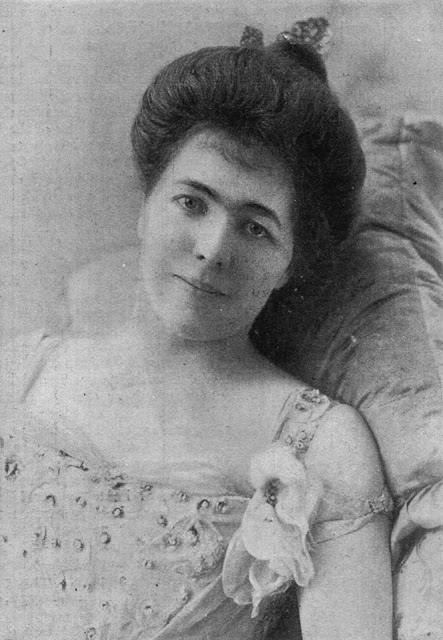.
Yesterday, as I continued with The Big Tidy Up, I came upon this playbill. Well, most of it. As you can see, the banner is missing. But never mind, I know what it is. It is a bill from a season of opera presented at the Theatre Royal, Bradford in June 1857 by Henri Corri.

*Henri Augustus Corri was to go on to be a force in English opera, and also a staunch purveyor of good quality touring operatic companies, but this was an early effort and didn’t turn out quite so well. Corri had been playing at Drury Lane in the episodic English opera seasons staged there by Edward Tyrrell Smith – Devilshoof in The Bohemian Girl, Don Jose in Maritana, and the like. In between stints in London, the company was sent on the road with, again, the standard repertoire, as the ‘Drury Lane Opera Company’, featuring, from time to time, such artists as Elliot Galer, Fanny Reeves, Julia Harland, John Herberte, Oliver Summers and other hardies of the touring circuits. But on 7 April 1856, when the ‘Drury Lane’ company opened its new tour at Bradford, there was a difference: it was ‘under the management of Mr Henri Corri [and Mr Herberte]’. Much of the troupe was made up of members of the Corri family … Henri, brother *Eugene (b London, 23 October 1826; d London, 4 February 1870), sister Emma Jane (‘Emilie Adami’) (b Dublin x 27 December 1832) and her husband, Frederick Younge (b Barron Street 19 February 1825; d Brockley-Whins 6 December 1870) ... but the Corri family didn’t at this stage have a prima donna in its ranks, so the useful *Rosalia Lanza (b Grafton Street, Fitzroy Square, London 22 July 1818; d Islington, London May 1905) took the soprano leads, with *Herberte [GADSDEN, John Burnett] (b 273 Oxford Street, London, x 19 December 1819; d Somerset Street, Portland Square 12 September 1857) as first tenor.
This unpretentious group gave its Bohemian Girls and Maritanas, and such virtually three-handed pieces as La Sonnambula, L’Elisir d’Amore and The Daughter of the Regiment through the year, and then set out on a new round, again from Bradford. As per our playbill. With a new prima donna and a new tenor, much the same repertoire and … disaster. Henri had ‘forgotten’ to pay the royalties on his ‘cheap’ operas. He had ‘forgotten’ to pay May’s for the hire of the costumes. And I dare say he had forgotten to pay a few other bills as well, not to mention such tawdry things as wages. By December, he was declared bankrupt. But less than a year later he was a valuable member of the Pyne and Harrison company, and this little hiccough was all forgotten, as he soared up into the heights of the English operatic world.
I was about to put this playbill back in its drawer, when I had the whim to find out just who were the folk who made up this rather slim-line company with, I imagine, it’s bootstrap budget …
No problem with the ‘stars’. *Henry Manley (b St Martin’s in the Fields, London c 1819; d 27 Castle Rd., Holy Trinity, London 2 February 1891), who replaced ‘Herberte’ as lead tenor was a proven touring opera tenor who ran for a number of years a company of his own round number two dates, often with his brother *John Manley, who was a long-lived operatic comprimario. Marian Taylor [TAYLOR, Elizabeth Sophia] (b Cleaveland Street, Marylebone 24 February 1826; d Hammersmith 24 April 1886) was not exactly an operatic prima donna. Burlesque and musical comedy were more her style. But she was an attractive and vivacious performer who was game to attempt Norma and Leonora in Il Trovatore at least adequately. She was also, it was said, a pain in the pants. When Corri went bankrupt, she took over the management of the company and ran it through the festive season. For her reward, she found herself a lover amongst the company. They were both married … but that’s another convoluted story. She had a long and occasionally acrimonious career on both sides of the Atlantic, largely in burlesque, ultimately without a husband.
Brother Eugene was principal bass, seconded by another faithful comprimario, *Robert Morrow (b Preston, c 1822; d Malvern, 6 October 1867), brother in-law Fred Younge, an actor-who-sang-a-bit, was still there to play mostly-acting roles … and that leaves ‘Madame Villiers’, ‘Madame Roby’, ‘Mrs Montague’, ‘Miss Montague’, and the chorus players Messrs Beale, Belford and Henri.
Hmmm. ‘Villiers’? ‘Montague’? Sound very much like stage names, yes? Well, I uncovered the ladies and … one was, and the other wasn’t!
So let’s go with Madame Villiers:
SCHOTT, Rosa Antoinette [‘Madame Villiers’] (b Toronto, c 1834; d Glenart Tor Park, Torquay 20 October 1918)
Miss Schott made a promising start to a career, which marriage, motherhood and family concerns pushed in a rather disappointing direction.
Rosa Schott was a member of the well-known German family of musicians and publishers. Her father, Adam Joseph Schott (b Mainz 1794; d Poona 4 August 1864) occupied various places in the family business, but was latterly employed as a military bandmaster in various corners of the world. His wife, Teresa Rosa Ziegler was from Malta, and his children were born in America, Canada and Gibraltar before the Schotts came to rest in London, where father became bandmaster of the Grenadier Guards, sometime musical director of the Highbury Barn Tavern et al.
Rosa seems to have begun her career as a member of the company at the Surrey Theatre in mid-1854 where I see her singing Lisa in La Sonnambula and Pastorella in The Golden Branch. From there she moved to the Haymarket Theatre where I spot her, in plays and in musical roles, as Marian in Paul Pry, in The White Horse of the Peppers, The Nervous Man, The New Haymarket Spring Meeting, Love’s Martyrdom, A Daughter to Marry and then as Julia Mannering in Guy Mannering, Brightray in the pantomime The Butterfly’s Ball, The Postman’s Knock, et al.
At the same time, she appeared at the Crystal Palace (‘‘The Rose’ with her usual taste’) with the Cole sisters, and in oratorio at St Martin’s Hall (Reinthaler’s Jephtha and his Daughter with Clara Novello, Ann Banks, Bessie Palmer, Montem Smith, Lewis Thomas) … Miss Schott, it seemed, could do anything.
But then came the man. On 31 January 1856, Rosa married Mr Robert Edwin Villiers (b Somerset St 18 April 1830; d 8f Bickenhall Mansions, Gloucester Place 29 April 1904), a supporting member of the Haymarket troupe, and after a tour as seconda donna with Henri Corri’s doomed opera troupe, retired to produce Marie Therese (b 21 March 1857), Laura Fanny (5 May 1858), Edwin Adam (25 May 1859) and eventually Isaac (b 8 April 1863).
But Mr Villiers wasn’t content to be a supporting actor all his life. In 1860, he took on, initially in partnership with one Mr James F Tindall, the lease of the South London Music Hall and, on 22 December, the venue opened, with Mr Frank Raynor of Weston’s topbilled amongst the singers, and Mrs Villiers in small print. Also in the small print was her younger sister, Helena Cecilia. This was not a good idea. Helena was to turn out to be the poison in the pastry. But the South London Music Hall was a good idea, and Edwin Villiers a much better manager than he had been an actor. And Mrs Villiers was swiftly ‘the principal singer’ of his house singing everything from ballads (‘The Green trees whispered’, ‘When Maggie gangs awa’’) to a Rigoletto selection with Mr Raynor. Helena didn’t stay too long. Apparently lacking her sister’s vocal talents, she went off to become a well-regarded dramatic actress, who sang a bit, under the name of Helena Ernstone.
 |
| Helena Ernstone |
Subsequently, Villiers introduced ‘comic duologues’ into his programme, and he and Rosa performed these with some success. Rosa even returned to the Haymarket briefly, to play Nelly in No Song, No Supper to much applause. But she did not take up again fully the career her marriage had interrupted.
In 1869, the South London was destroyed by fire, and Villiers moved on to running the Royal Hotel and Assembly Rooms in Margate. Through the 1870s, Mrs Villiers featured on some of the bills, took an annual Benefit, and her elder daughter, Marie also appeared as a vocalist.
But the tale was not destined to have a cosy ending. In 1877, Villiers, who had also taken over the famous Canterbury Hall, went bankrupt to the enormous tune of 60,000 pounds. But worse was to come. Little sister Helena had been weaving her nets, and had begun an affair with Villiers. Finally, in 1880, Rosa sued for divorce. In the 1881 census, Villiers and Helena (‘sister-in-law’) are living together in Marylebone.
That seems to have been the end of the London careers of both the sisters. Not so, Mr Villiers, who made himself respectable all over again, went on to launch the London Pavilion, and maintained a position at the top of the music-hall business to the end of the century.
Rosa lived much of her subsequent life with her widowed daughter, Laura, and Marie’s son Edward Angus Hill-Mitchelson. Marie (‘Miss Marie North’) was on the road with her actor-producer husband Edward Alfred [Hill] Mitchelson. Marie died in 1912, and her mother in 1918. Mr Hill-Mitchelson remarried and, keeping up the family trend, divorced two years later when his wife accused him of adultery with ‘at least two (female) members of the troupe)’. Helena, who had somehow amassed a nice wee nest egg, never married and died alone at The Chalet, New Road, Ferndown 2 July 1933.
Rosa’s son, Adam, was for a while (prior to divorce) married to the musical comedy and music-hall performer Emma Broughton, sister to the more famous Phyllis Broughton.
 |
| Emma Broughton |
One down.
ROBY, Rosa Maria (née SOANE) (b Margate 5 July 1819; d Hackney November 1880) doesn’t appear much, that I can see, after this engagement, and the 1861 census shows us why. She is the wife of Henry Greatorex Roby ‘comedian and artist’, whom she married in 1855, and the mother of Ada M (4), Bernard Henry (3), Charles Montague (2), Louisa Agnes (4 months) … 28 June 1862 came Beatrice ...
Rosa was the daughter of the well-known playwright, librettist and adapter George Soane and his wife Agnes. She described herself in the census as ‘actress’, and it was her sister, Clara Agnes (1817-1898) who was the vocalist, appearing in 1848 at the famous London Wednesday concerts alongside Sims Reeves, *Miss Poole, the *Williamses and *Mrs Alexander Newton. I see what I assume is Rosa playing with Macready at the Manchester Theatre Royal in 1849, but in 1852, when she appeared as Ophelia at Leicester she was criticised for her ‘almost gigantic figure and stiff action’. Exeter, however, found her ‘an accomplished actress’. I notice that she played the part of Julia Mannering bereft of its usual music. Odd.
Two down.
MONTAGUE
‘Mrs Montague’. I got myself in deep here. For, no, it is not a veritable name, although some of the sort-of family historians, and even other theatrical writers would have us believe so. I got in deep, because there is more than one ‘Mrs Montague’, all actresses, related the one to the other, and all in some way connected with the Corri family! I started off chasing one Mrs M, then gradually came to realise that it was surely her sister-in-law I was after. Or not. And the story goes like this.
On 20 December 1814 a coach-joiner by the name of Daniel Gainey (1794-1869), from Kingston, married an apparently very young London lass by the name of Emmeline Maria Hetling (d 1865), and they settled at 10 Little Farmer Street, Tower Hamlets. Around about 1821, they, and their first child, moved to Aston, Warwickshire, and at the same time Daniel stopped joining coaches and he and his wife took to the stage. Daniel called himself ‘Henry Montague’ and his wife was ‘Emmeline Montague’. They had, by my count, five children in the 1820s, four of whom survived, all of whom went on the stage. Three of those eventually got wed into three of the most extensive theatrical families in Britain, so the ‘Montagues’ remain a footnote to the history of the Corris, the Cowells and most fashionably of all, the ‘Comptons’. They also used the same Christian names – Emmeline, Susan, Agnes, Henry – in all branches, called themselves Montague whether they were(ish) or not, and generally made it hard for me to sort them all out …
Since I was looking for ‘Mrs Montague’ (otherwise Gainey), I naturally went looking for the wife of the one surviving brother of the flock, William Stuart Frazier Gainey or Montague. And there she was. Actress. William married Sophia Leathley Cowell, niece of W H Murray of the Theatre Royal, Edinburgh, sister to the comedian Sam Cowell, in Cork 5 May 1845. They had two sons, both of whom died in Lambeth, in 1851, while William was working at the Surrey Theatre. After which, Sophia disappears, and William is apparently shacked up with Miss Alicia Woulds, sister of Mary Jane Woulds of the Bath Theatre, now the wife of the third Corri brother, Patrick. William would eventually marry Alicia after Sophia’s death in Yarmouth in 1858. So is this my Mrs Montague of 1857? Sophia? Or, more likely, Alicia? The Corri connection made it seem possible. But then I found another Corri connection.
The story of Daniel’s eldest daughter, Emmeline Catherine Gainey ka Montague (b Tower Hamlets, 1 November 1820; d Hastings 31 December 1910) is oft told. She married into the Mackenzie ka Compton family, and spawned a host of theatricals. Youngest daughter Susan Caroline Biancha (b Aston, 9 September 1829) seems to have dropped her spare names, and got wed in 1851 after a little career. Middle daughter, Agnes Louisa Mason Gainey (b Aston 13 July 1827; d Ashby de la Zouch 1906) took to the stage as Agnes Montague.
I first see her at the Theatre Royal, Manchester in October 1846 cast as Donaldbain to the Macbeth of Charles Pitt. Susan is baby Macduff, and Hecate is sung by … Patrick Corri. In 1847, Agnes is featured with Charles Kean and Mrs at the Theatre Royal, Dublin, in 1849 I spot her at Harrogate, in 1850 at Greenock and in 1851 playing Lady Anne to her father’s Richard III in Clitheroe. Back in Manchester, I see her in Timour the Tartar with a ‘Miss Montague’ who may be Susan, at Bury she is ‘sister of Emmeline’ and ‘of William’ and father is the stage manager (‘late of Bath’) of the local theatre. In 1854 she is at Derby and in 1855 Northampton and at Preston where she is now … Mrs Rupert Corri! But she then vanishes. So is it she who is ‘Mrs Montague’? In 1870 she is again ‘Agnes Montague’, with her husband at Rochdale …
And Miss S Montague, who can be spotted playing with the Bath amateurs in 1851? Is that Susan? The family lived long in Bath -- father actually became known as ‘Bath’ Montague -- where they seemingly traversed a few vicissitudes. In 1832 ‘The poor light comedian of Bath (Montague) for whose benefit Miss Jarman, Warde and Meadows performed gratutitously netted upwards of 200L which sum was immediately applied to the relief of the poor invalid and his necessitous family’. But in later days, when the family was aureoled with the exploits of the Comptons, granddad was referred to as ‘the great comedian’.
The extensions of the ‘Montague’ family are legion. I’ve explored most of them, and there are a few that do not fit. Not counting what appear to be the premarital child/children of William and Alicia. I have a spare Emmeline, a spare Henry Montague Gainey and family … but, never mind, the point of this exercise was to identify ‘Mrs Montague’ of the Corri company and the accompanying ‘Miss Montague’. Sophia? Alicia? Agnes? I think I will rule out Sophia as being unlikely to be involved with her husband’s mistress’s family company. Alicia? Well, Alicia was a harpist. But from there to playing the dramatic role of Meg Merrilees made famous by Charlotte Cushman … On the other hand, Agnes, the ‘tragedienne’, recently married into the Corri family …
Well, I put it to you, and I leaves it to you. But I think I favour Agnes.
And that just leaves Mr Beale, Mr Belford and Mr Henri. Mr Henri doesn’t convince me a lot. But Charles Beale was for real. At one stage, in the wake of the Corri bankruptcy, he was ephemerally listed as manager of the company. Mr Belford is evidently not the same chap of that name who played with Phelps at Sadler’s Wells, and then with Henry Marston … perhaps his brother?
I’ll put the bill back in its place now. It’s certainly provided me with a day and a half’s amusement and challenges. And it might encourage the family historians and others involved to correct the details of their fairly celebrated famil(ies) on Geni and Ancestry.com. Meanwhile, I’ll have one more go at working out who the ‘Emmeline Montague’ (b c 1852) who allegedly wed Tom Paulton (brother of the famous Harry) fits in, and where Henry Montague Gainey, husband of Mary Thornhill (married 1836) and father of Bessie Montague Gainey belongs, and which Henry it was who died 18 September 1877 …
* the artists thus marked have full-length biographies stored in my data base. I may get round to publishing them at some stage!
















































